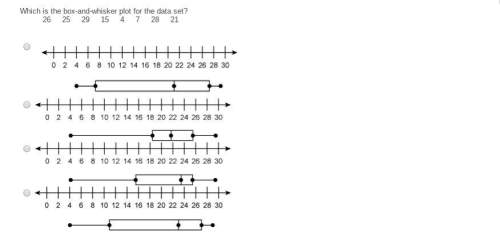
Mathematics, 20.01.2020 19:31 rorob
In a study of the progeny of rabbits, fibonacci (ca. 1170-ca. 1240) encountered the sequence now bearing his name. the sequence is defined recursively as follows.
an + 2 = an + an + 1, where a1 = 1 and a2 = 1.
(a) write the first 12 terms of the sequence.
(b) write the first 10 terms of the sequence defined below. (round your answers to four decimal places.)
bn =
an + 1/
an, n ? 1.
(c) the golden ratio ? can be defined by
limn ? in a study of the progeny of rabbits, fibonacci (cbn = ?
, where
? = 1 + 1/? . solve this equation for ? . (round your answer to four decimal places.)

Answers: 2


Other questions on the subject: Mathematics

Mathematics, 21.06.2019 17:30, hailscooper7363
Simplify this expression.2(10) + 2(x – 4) a. 2x + 16 b. x + 12 c. 2x + 12 d. x + 16
Answers: 2

Mathematics, 21.06.2019 19:30, daquanmcqueen77
Are triangles the congruent? write the congruency statement. what is the congruency that proves they are congruent? what is the perimeter of ∆pqr?
Answers: 1

Mathematics, 21.06.2019 20:10, morgantisch25
A. use the formula for continuous compounding with the original example: $1000 invested at 2% for 1 year. record the amount to 5 decimal places. use a calculator. b. compare it to the result using the original compound interest formula with n = 365 calculated to 5 decimal places. which has a larger value? explain.
Answers: 1

Mathematics, 21.06.2019 20:30, gwendallinesikes
Is the point (0, 8) on the x-axis or y-axis? how do you know?
Answers: 2
You know the right answer?
In a study of the progeny of rabbits, fibonacci (ca. 1170-ca. 1240) encountered the sequence now bea...
Questions in other subjects:

History, 03.11.2019 13:31

English, 03.11.2019 13:31

Social Studies, 03.11.2019 13:31



Chemistry, 03.11.2019 13:31

Mathematics, 03.11.2019 13:31

Chemistry, 03.11.2019 13:31





